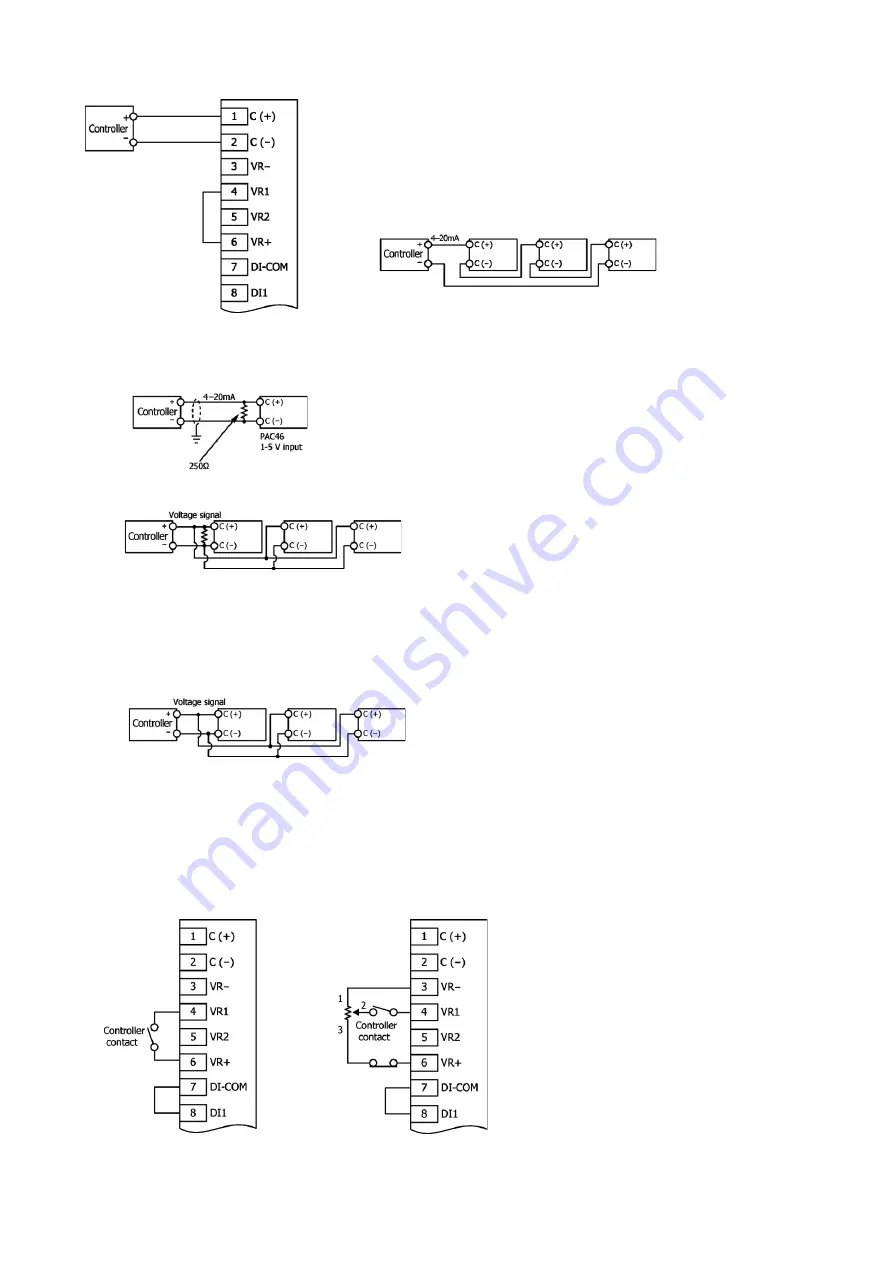
10
7-3-1 Connection between 4
–
20 mA output type controller and instrument (4
–
20 mA input)
To connect multiple units of the instrument, wire them in series as shown below.
The input resistance of the instrument (4–20 mA input) is 100 Ω. Therefore, if the
allowable load resistance range of the controller is 600 Ω, up to six units of the
instrument can be connected.
7-3-2 Connection between 4
–
20 mA output type controller and instrument (1
–
5 V input)
When connecting a 4–20 mA output type controller and the instrument (1–5 V input), connect a 250 Ω resistor to the input terminals in
parallel.
To connect multiple units of the instrument, wire them in parallel as shown below.
7-3-3 Connection between 0-10 V output type controller and instrument (0-10 V input)
For this connection, also use the 0-10 V input type instrument.
As the input resistance is high, use two-core shielded cable and prevent the effects of noise by single earthing.
Connect the (+) and (-) terminals of the controller respectively to the input terminals, C (+) and C (-), of the instrument.
To connect multiple units of the instrument, connect them in parallel as shown below. However, resistor connection is not required.
7-3-4 Connection between contact output type controller and the instrument
When connecting the instrument to a contact output type controller, short-circuit terminals 7 (DI-COM) and 8 (DI1).
Leave input terminals 1 [C (+)] and 2 [C (-)] of the instrument unconnected.
When the terminal 4 (VR1) is opened, output turns off.
For connection to a contact output type controller, the instrument can be connected to a two-position (ON/OFF), proportional, or PID system.
In wiring, you need not consider polarity and can use a wiring resistance of up to 10 Ω without problems. However, the controller should be
wired separately from a strong electric circuit.
■
Switching between 0 and 100%
■
Connection to external power adjuster
When using a voltage input type controller, wire the control
signals in parallel.
If the maximum load current is 2 mA at 0 to 10 V, up to 44
units can be connected, since the input resistance of the
PAC46 is 220 kΩ.










































